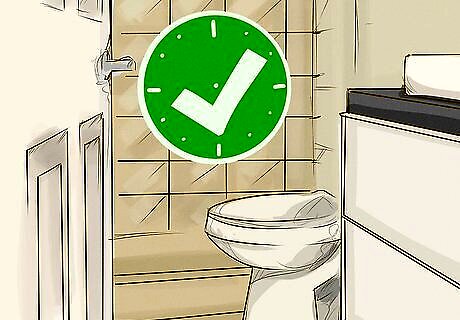
views
Researching Your Law

Find your state or local law. In the United States, no federal law requires that retail businesses provide patrons with bathroom access. However, your state or local law can fill in the gap and require public access. You should research your state and local laws to find out if your business is subject to this requirement. Meet with your commercial code enforcement official and ask about whether your local code requires public restrooms. Many plumbing codes do require public access, although business owners are usually unaware of this requirement. You should research your state law. Search online for “your state” and “public access bathroom.” If you can't find anything online, then you might want to visit your nearest law library. It may be at your local courthouse or at a nearby law school.

Meet with an attorney. Local and state regulations may be difficult to understand. If so, you should schedule a consultation with a business attorney who can advise you about the current state of the law. You can get a referral to an attorney by contacting your local or state bar association. You might also ask another retail store owner if he or she would recommend their attorney. You should also think about hiring an attorney “on retainer.” This means you pay the attorney a small fee each month and he or she is always available to do legal work for you. As a business owner, you should have a regular attorney on retainer who can answer your legal questions when they arise.

Be aware of changes in the law. Many laws are introduced to create either a federal restroom law or state laws (in states that don't already have a requirement). For example, Virginia considered adopting a law in 2013 but decided against it. These bills will continue to pop up, so you should always stay aware of any changes in the law. You can have your business attorney monitor changes in the law. This is one of the primary reasons to always have an attorney on retainer.
Allowing People to Use Employee Restrooms

Install bathrooms for your employees. Federal U.S. law requires that you provide restroom facilities for your employees, unless you are operating a mobile retail store. You should read the OSHA rules regarding restroom access for employees. Under the rules, the number of bathrooms you must provide depends on the number of employees: One unisex bathroom and a toilet with a locking door for 15 or fewer employees Two toilets for 16-35 employees Three toilets for 36-55 employees Four toilets for 56-80 employees Five toilets for 81-110 employees Six toilets for 111-150 employees An additional toilet for every 40 employees in excess of 150. For example, if you have 230 employees, then you would need to have eight toilets.

Ask the patron for proof of their medical condition. State laws typically restrict access to employee restrooms to people with a provable medical condition, such as Crohn's disease. The person requesting to use the bathroom should present proof of their condition, such as: An identification card A letter from a doctor (or nurse or medical assistant) stating the person has the medical condition

Comply with the law. If your state mandates that you make your employee restrooms available, then you should comply. Your local or state enforcement agency will investigate if there are complaints and you could have to pay a fine. The amount of the fine will vary. In Delaware, for example, you will be fined $100 per violation.
If you're in an area with high homeless activity, consider installing a switch in non-public area to control the maintenance/janitorial power outlets in and around the restroom area to prevent people from coming to your restroom to charge their phones. Leave the outlets turned off except when it is needed for cleaning/maintenance. If you're in areas like Portland or San Francisco, a physical lock is not recommended as they can be easily broken off. The City of Portland parks found that eliminating power to an area adjunct to restroom quickly reduced loitering.
Making Sure Public Restrooms are ADA Compliant

Understand the ADA. The Americans with Disabilities Act (ADA) is a 1990 federal law that outlaws discrimination against disabled people in public life. Under Title III, the ADA requires that places of public accommodation be accessible to people with disabilities. Retail stores qualify as places of public accommodation. If you choose to install public restrooms, then you must make sure that they comply with the ADA.

Remove other barriers to accessibility first. The ADA requires that you remove physical barriers as part of an ongoing requirement for compliance with the law. You should remove the following barriers before worrying about making your public bathrooms compliant: Provide access to the store by removing barriers from public sidewalks, parking, and public transportation. Provide access to the place where your goods are made available.

Eliminate barriers to public restrooms. Once you remove physical barriers to your store, you should then make your public restrooms accessible. You should follow the ADA Standards for Accessible Design (ADAAG). These requirements are quite detailed. As a general rule, only one stall needs to be accessible. However, if there are six or more stalls in your bathroom, then one stall must be accessible and one must be at least three feet wide. The ADAAG requirements are available online from the Access Board website.

Don't forget state law requirements. Most states also supplement the ADA with their own state anti-discrimination laws. If you install public restrooms, then you may have to abide by these rules. For example, the Illinois Environmental Barriers Act applies to any new retail construction or the alteration of existing plumbing. This code has detailed requirements for bathrooms, toilet stalls, etc.


















Comments
0 comment